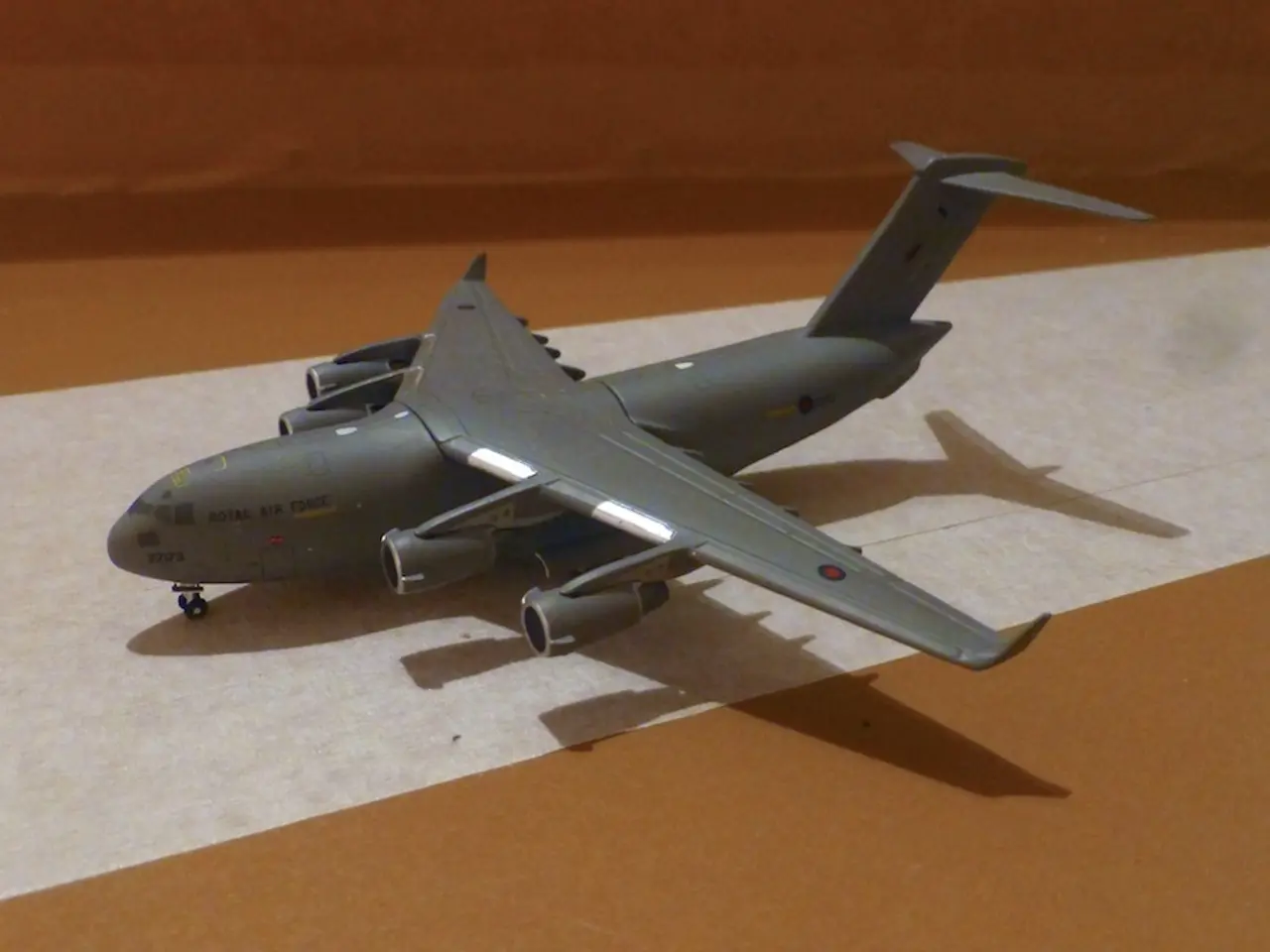Lockheed CEO Proposes F-35 Enhancement as Transitional Step for F-47
Lockheed Martin Plans Major Upgrade for F-35 While Pursuing Next-Generation Fighter
The F-35, Lockheed Martin's flagship multirole stealth fighter, is set for a significant upgrade, aiming to extend its lifecycle and capabilities as a pragmatic bridge to the company's next-generation fighter.
In 2025, Lockheed Martin plans to deliver between 170 and 190 F-35 aircraft, demonstrating strong production momentum. Despite the U.S. Department of Defense cutting back projected orders for 2026, congressional committees are considering boosting them.
The F-35 upgrade, known as Block 4, includes new weapons, improved sensors such as the AN/APG-85 AESA radar, expanded electronic support measures (ESM), and advanced software capabilities to enhance agility and responsiveness. This upgrade is part of a continuous capability development program aimed at extending the F-35’s operational relevance well into the future.
Lockheed Martin CEO Jim Taiclet has referred to this upgrade as an important "bridge" to the newly designated F-47, which he predicts could be a decade away from service. The F-47, a sixth-generation fighter under the Next-Generation Air Dominance (NGAD) program, is expected to surpass the F-35 in performance metrics like combat radius (over 1,100 miles) and speed (above Mach 2).
The F-47, primarily developed by Boeing, is viewed as a transformational platform that changes the strategic character of air combat by countering peer adversaries in ways not feasible today. Lockheed Martin aims for the F-35 upgrades to achieve approximately 80% of sixth-generation system effectiveness at about half the cost, creating a cost-effective bridge until the F-47 reaches full operational capability.
In other news, Lockheed Martin is facing losses on several programs, including the CH-148 Canadian Maritime Helicopter program and the Turkish Utility Helicopter, due to customers stretching out or restructuring the programs. Furthermore, the company reported a $1.6 billion loss in the second quarter, with the majority of the losses coming from a classified Skunk Works project.
The government and Lockheed Martin have announced a handshake deal for Lots 18 and 19 of the F-35, but contracts are still being finalized, with a potential completion in the third quarter. Lot 19 would consist of 150 F-35 airplanes.
Lockheed Martin's rapid development efforts have also led to the successful launch of the ARRW, the first proven hypersonic weapon capable of being launched from an American aircraft. The AGM-183A Air-launched Rapid Response weapon is back in the Air Force budget after a yearlong hiatus, with a request for $400 million.
However, the F-35 production faced a year-long pause into mid-2024 due to issues testing the Tech Refresh 3 upgrade. Despite these challenges, Lockheed Martin continues to push forward, balancing the needs of its current and future aircraft programs.
- Lockheed Martin's F-35, a multirole stealth fighter, is slated for a major upgrade with Block 4, enhancing its capabilities for a longer lifespan, acting as a transitional bridge to the anticipated F-47.
- The F-47, part of the Next-Generation Air Dominance (NGAD) program, is projected to outperform the F-35 in metrics such as combat radius and speed, transforming air combat strategies against peer adversaries.
- Despite production momentum, with plans to deliver between 170 and 190 F-35 aircraft in 2025, the U.S. Department of Defense has reduced projected orders for 2026, yet congressional committees are mulling over a possible increase.
- The F-35 upgrade includes advanced features like new weapons, improved sensors, expanded electronic support measures, and software capabilities, aiming to match around 80% of sixth-generation system effectiveness at a cheaper cost.
- Aside from the F-35, Lockheed Martin is dealing with losses on various programs, including Canadian Maritime Helicopter and Turkish Utility Helicopter, due to customers delaying or restructuring projects.
- In the realm of space, Lockheed Martin has successfully launched the ARRW, America's first proven hypersonic weapon, capable of being launched from an aircraft, reintroduced into the Air Force budget after a year-long hiatus with a $400 million request.







